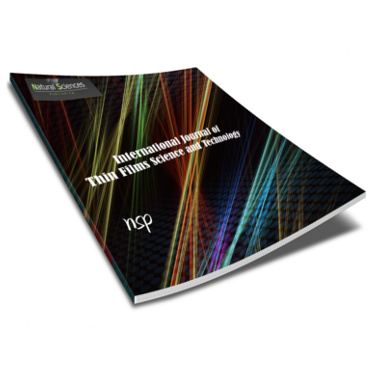International Journal of Thin Film Science and Technology

Abstract
This work has examined the efficaciousness of iron nanoparticles made from tea waste extract in the elimination of Eriochrome black T (EBT) dye. Field emission gun scanning electron microscopy (FEG-SEM) with EDAX, High- resolution transmission electron microscopy (HR-TEM), X-ray diffraction (XRD), and FTIR spectroscopy were used to evaluate the synthesized iron capped nanoparticles. Iron nanoparticles seemed amorphous, according to the X-ray diffraction patterns. The spherical form of the Fe NPs was discernibly shown by scanning electron microscopy. Particle size of Fe NPs is found to be in the 30–40 nm range using transmission electron microscopy (HR-TEM). Additionally, research was done on the deterioration of the Eriochrome black T pigment (EBT). It was investigated how several experimental factors, such as the amount of adsorbent, pH, dye concentration, and contact duration, affected the pace of reaction in order to determine the ideal conditions for dye degradation. There are pseudo-first-order kinetics involved in the adsorption of the dye Eriochrome black T (EBT). At a pH of 3, 50 ppm of Eriochrome Black T (EBT) dye concentration, and 0.60 g of adsorbent, the dye degradation was observed to exhibit optimized results. The highest dye elimination was accomplished by stirring for 90 minutes at a Room temperature.
Recommended Citation
B. Mampilly, Rehana; H. Bhatt, Sandip; J. Modi, Niral; and Pathan, Amanullakhan
(2024)
"Adsorption of Eriochrome Black-T dye by batch investigations using waste tea@Fe NPs as low-cost adsorbent,"
International Journal of Thin Film Science and Technology: Vol. 13
:
Iss.
1
, PP -.
Available at:
https://digitalcommons.aaru.edu.jo/ijtfst/vol13/iss1/3

